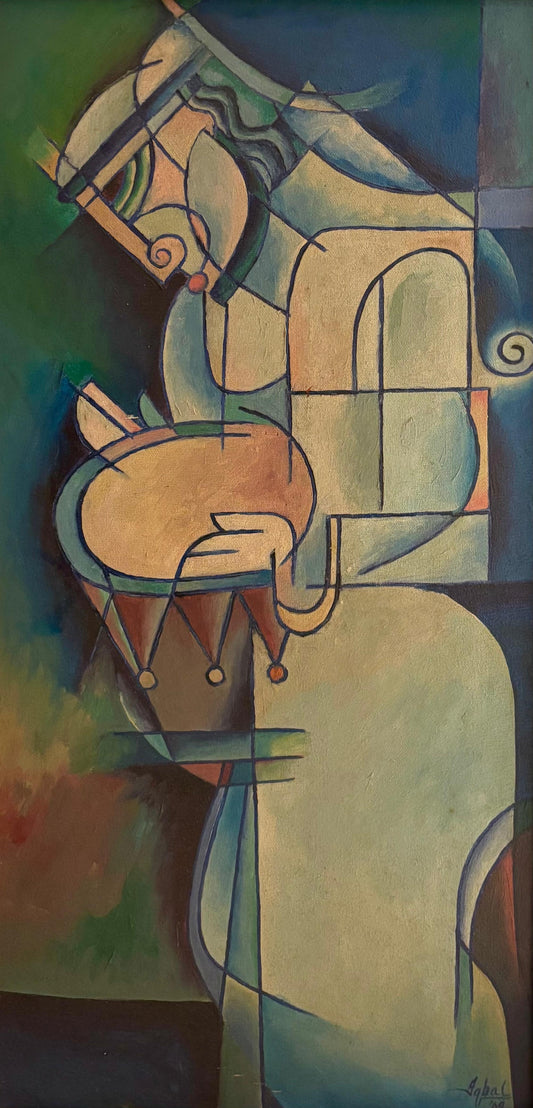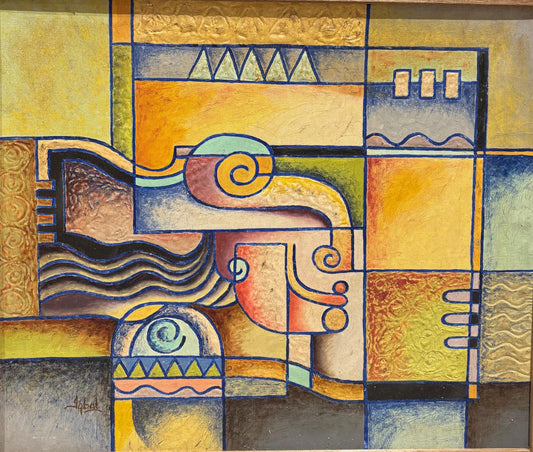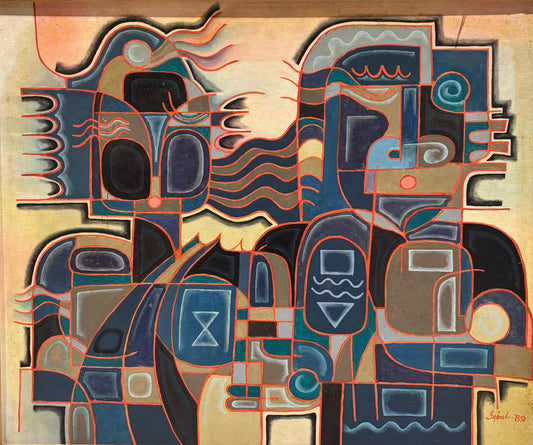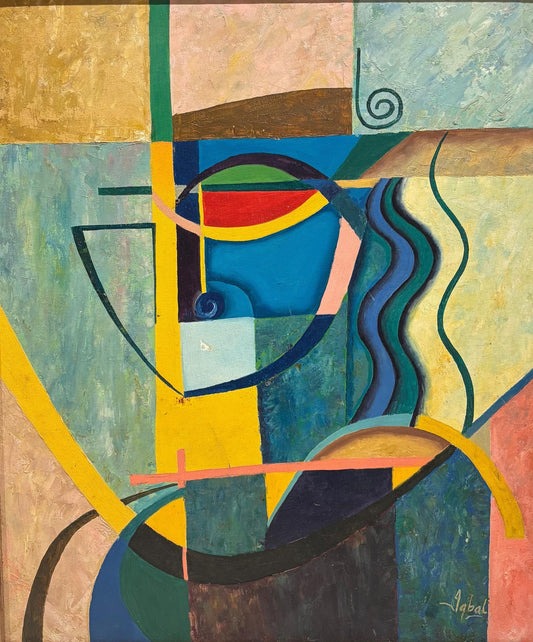
IQBAL S V
Iqbal S. V.’s work draws deeply from the vibrant and multifaceted cultural and natural landscapes of India, transforming lived experience and folk traditions into a unique visual language. His sources of inspiration are as vivid and dynamic as life itself, ranging from the immediate beauty of nature to the pre-existing artistic manifestations that inhabit the Indian cultural ethos. By synthesizing these influences, Iqbal translates his impressions and imagination into paintings that reflect both personal vision and a broader celebration of Indian heritage.
Central to Iqbal’s artistic practice is the harmony of line, shape, and rhythm. Decorative motifs and geometric forms, informed by the rich folk traditions of India, are seamlessly integrated into his compositions, creating images that resonate with joyous energy. The interplay of linear lyricism and patterned geometry generates a rhythmic visual dialogue, reminiscent of the folk performance traditions of Kerala, including Theyyam and Koodiyattam. These art forms, with their stylized gestures, circular motions, and elaborate theatricality, echo throughout Iqbal’s canvases, lending his work a sense of movement, drama, and cultural resonance.
India, and specifically Kerala, the southernmost state where Iqbal was raised, serves as a profound influence on his visual vocabulary. From the full-bodied shapes of temple carvings to the circularity inherent in everyday life, from the dynamic postures of classical dance forms such as Bharat Natyam, Kuchipudi, Kathakali, and Mohiniyattam, to the rhythmic flow of script and text, every brushstroke in Iqbal’s work reflects the essence of Indian identity. His compositions often draw directly from Kerala’s colorful landscapes, architectural motifs, festivals, and folk performances, creating a visual tapestry that is both lyrical and structurally sophisticated.
One particularly distinctive influence is the Theyyam ritual, with its thirty-six stylized face designs, which inform Iqbal’s use of geometric forms and bold, expressive colors. These elements produce figures that simultaneously appear hidden and revealed, balancing abstraction with narrative clarity. Through this careful integration of line, pattern, and color, Iqbal achieves a synthesis of cultural memory and personal imagination, crafting artworks that are vibrant, rhythmic, and evocative of India’s rich heritage while firmly establishing his own distinctive voice within contemporary abstraction.




